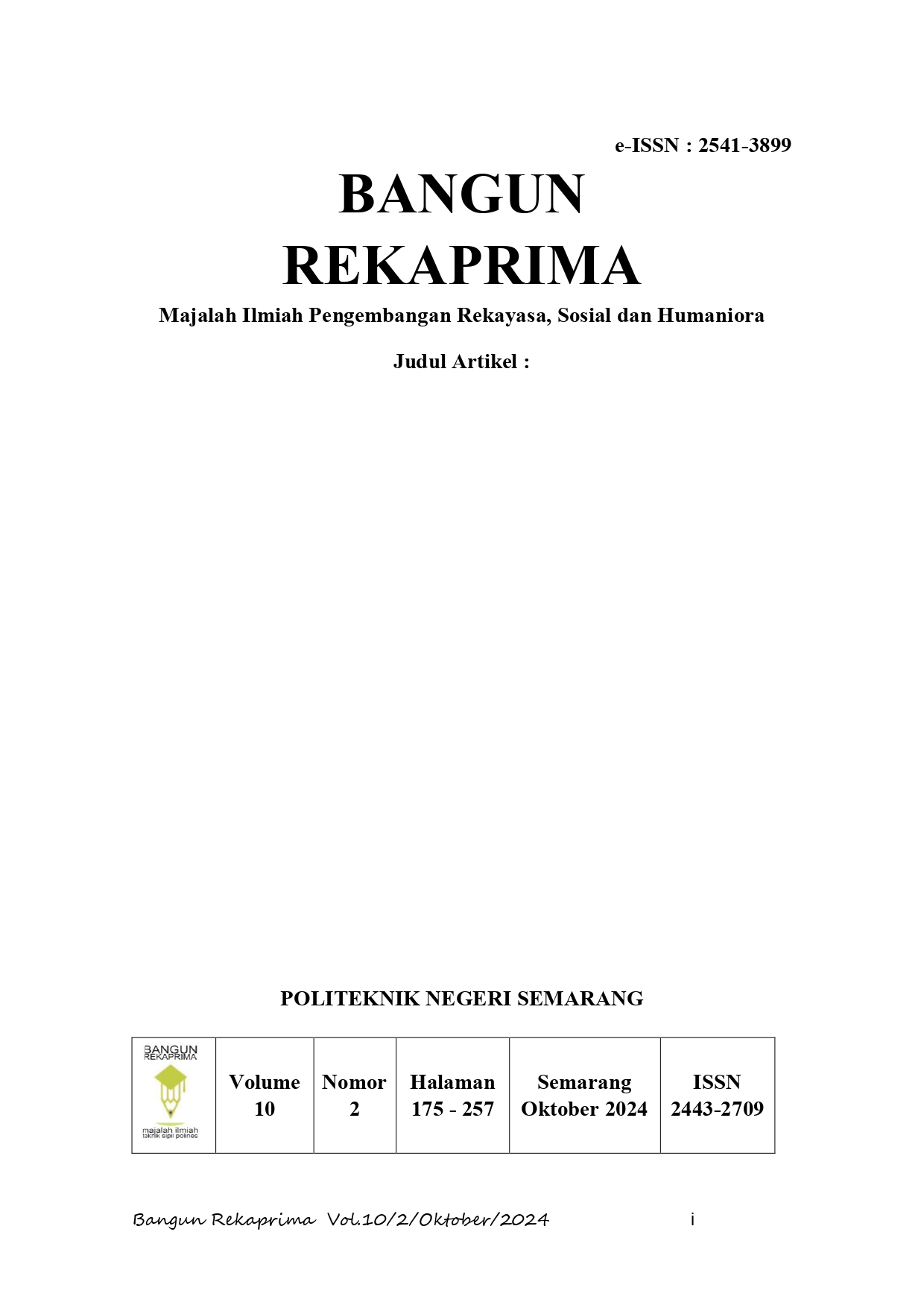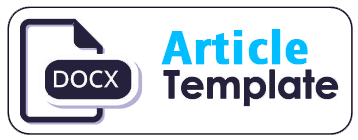ANALISIS PEMETAAN KENYAMANAN JALAN BERDASARKAN INTERNATIONAL ROUGHNESS INDEX (IRI) UNTUK KENDARAAN RODA EMPAT KECAMATAN TEMBALANG, KOTA SEMARANG
DOI:
https://doi.org/10.32497/bangunrekaprima.v10i2.6178Keywords:
International Roughness Index (IRI), Road Condition, Maintenance BudgetAbstract
Assessment using the International Roughness Index (IRI) is an important indicator in evaluating the quality of road surfaces, which affects the comfort and safety of users. This study aims to map road conditions in Tembalang District, Semarang City, using the IRI value as a reference for determining maintenance budget needs. IRI data was collected using the RoadLabPro application on a smartphone installed in a four-wheeled vehicle, with measurements taken on various roads in Tembalang District to obtain a representation of overall road conditions. The collected data were analyzed using Microsoft Excel to classify road conditions into categories of Good (IRI ≤ 4.0), Moderate (4.1 ≤ IRI ≤ 8.0), Lightly Damaged (8.1 ≤ IRI ≤ 12), and Severely Damaged (IRI ≥ 12). The analysis results show that 80.65% of the road sections are in good condition, with an average IRI of 2.98 m/km, while the other 19.35% are in moderate condition with an average IRI of 4.32 m/km. Mapping data using QGIS facilitates the identification of areas that require further maintenance. The results of this study are expected to support more appropriate decision-making regarding road maintenance planning and budgeting in Tembalang District.
References
Abdelaziz, N., El-Hakim, R., El-Badawy, S., & Afify, H. (2020). International Roughness Index prediction model for flexible pavements. International Journal of Pavement Engineering, 21, 88 - 99. https://doi.org/10.1080/10298436.2018.1441414.
Alvarez, E., Ferris, J., Scott, D., & Horn, E. (2018). Development of a discrete roughness index for longitudinal road profiles. International Journal of Pavement Engineering, 19, 1043 - 1052. https://doi.org/10.1080/10298436.2016.1237180.
Chen, S., Lin, C., Tang, C., Chu, L., & Cheng, C. (2020). Research on the International Roughness Index Threshold of Road Rehabilitation in Metropolitan Areas: A Case Study in Taipei City. Sustainability. https://doi.org/10.20944/preprints2 02010.0509.v1.
Kaloop, M., El-Badawy, S., Ahn, J., Sim, H., Hu, J., & El-Hakim, R. (2020). A hybrid wavelet-optimally-pruned extreme learning machine model for the estimation of international roughness index of rigid pavements. International Journal of Pavement Engineering, 23, 862 - 876. https://doi.org/10.1080/10298436.2 020.1776281.
Kementerian Pekerjaan Umum. Peraturan Menteri Pekerjaan Umum Nomor: 13/PRT/M/2011 Tentang Tata Cara Pemeliharaan Dan Penilikan Jalan. Jakarta: Kementerian. Pekerjaan Umum (2011)
Kropác, O., & MúÄka, P. (2005). Be careful when using the International Roughness Index as an indicator of road unevenness. Journal of Sound and Vibration, 287, 989-1003. https://doi.org/10.1016/J.JSV.2005.02.015.
Luo, Z., Wang, H., & Li, S. (2022). Prediction of International Roughness Index Based on Stacking Fusion Model. Sustainability. https://doi.org/10.3390/su14126949.
Mirtabar, Z., Golroo, A., Mahmoudzadeh, A., & Barazandeh, F. (2020). Development of a crowdsourcing-based system for computing the international roughness index. International Journal of Pavement Engineering, 23, 489 - 498. https://doi.org/10.1080/10298436.2020.1755434.
MúÄka, P. (2017). International Roughness Index specifications
around the world. Road Materials and Pavement Design, 18, 929 -
https://doi.org/10.1080/14680629.2016.1197144.
Nguyen, H., Pham, B., Son, L., Thang, N., Ly, H., Le, T., Ho, L., Le, T., & Bui, D. (2019). Adaptive Network Based Fuzzy Inference System with Meta-Heuristic Optimizations for International Roughness Index Prediction. Applied Sciences. https://doi.org/10.3390/app9214715.
Sidess, A., Ravina, A., & Oged, E. (2020). A model for predicting the deterioration of the international roughness index. International Journal of Pavement Engineering, 23, 1393 - 1403. https://doi.org/10.1080/10298436.2020.1804062
Downloads
Published
Issue
Section
License
The copyright of the received article shall be assigned to the journal as the publisher of the journal. The intended copyright includes the right to publish the article in various forms (including reprints). The journal maintains the publishing rights to the published articles.

This work is licensed under a Creative Commons Attribution 4.0 International License.






